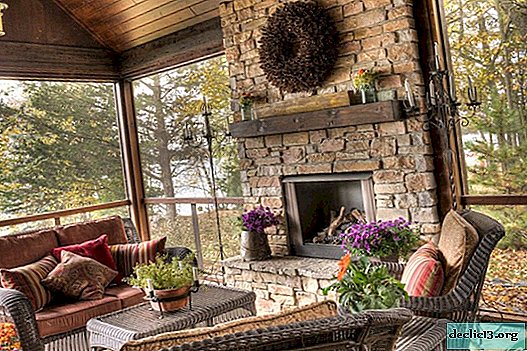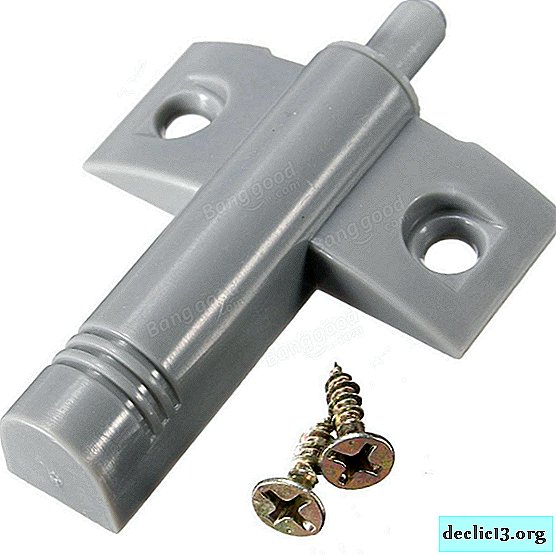Detailed description of violet varieties "Frosty cherry" and "Winter cherry"

Violet is very popular among indoor plant lovers. She rewards the owner with a beautiful view of bright flowers and small velvety leaves.
Still new varieties of violets. In the article we will consider beautiful and unusual varieties of violets called "Cherry" and their description. We also learn how to properly care for them and what conditions they require.
Botanical characteristics and features
Violet is a perennial plant with petiole leaves. The shape of the leaf is heart-shaped. This plant has a creeping stalk. Violet is found in most regions of the world with a temperate climate; the countries of North America, the Andes and Japan are most rich in the variety of species. The flowers of violets are single, of various colors, the fruit is a box with opening sashes.
Some types of violets are bred for smelling flowers, others for bright flowers. The tricolor violet herb is even used in medicine. Violets of varieties "Frosty Cherry" and "Winter Cherry" unlike all other violets, they have a dark cherry color, as well as a white border at the edges of the petals.
Appearance
 In 2005 Konstantin Morev, a domestic breeder, received an unbeatable variety of Morozhnaya Cherry. Any bloom of this variety is beautiful - and as if with a frosty almost white flowers, and ripe cherry, and with bright strokes. For eleven years he worked on the formation of this wonderful flower, bringing it to perfection.
In 2005 Konstantin Morev, a domestic breeder, received an unbeatable variety of Morozhnaya Cherry. Any bloom of this variety is beautiful - and as if with a frosty almost white flowers, and ripe cherry, and with bright strokes. For eleven years he worked on the formation of this wonderful flower, bringing it to perfection.
Morev is known as the author of many original exhibition varieties:
- small-flowered Baby Mermaid;
- snow-white wedding bouquet;
- motley Kostina fantasy;
- purple with white rim The Lord of the Rings;
- summer twilight and others.
You will find a detailed description of the varieties of violets bred by K. Morev in this article.
Elena Korshunova in 2006 the variety EC - Winter cherry was bred. This is also a Russian breeder with many years of experience (about other varieties bred by this breeder, read here). The varieties considered today in the article are relatively young, but already very famous, as they enchant with their cherry beauty and are remembered for a long time.
Description and photo of varieties
Check out the description and photos of the Frosty Cherry and Winter Cherry varieties.
The violet variety "Frosty Cherry" has large double flowers, the color varies from pale pink to raspberry. The flower size is 4 cm. The petal is closer to the center, the darker it turns into a red-cherry with a thin white stripe along the edge.
An interesting feature of this flower is its ability to change color depending on the ambient temperature - at low, the flower becomes lighter, and at high dark cherry. Also, its saturation varies from flowering time and lighting stability.
The rosette consists of simple pointed leaves, has standard sizes. Flowering is plentiful and long. The aging of a flower can be recognized by darkening petals. Violet "Frosty Cherry" valued for a long flowering period. She pleases with her flowers for about 10 months.
The plant needs short breaks for biological relaxation. You can increase the number of peduncles using special fertilizers.




Violet variety "Winter Cherry" has huge flowers, semi-double to the touch, with wavy edges. The color is deep cherry to black with a white border around the edge of the petals, as if tucked with hoarfrost. It can also change color - the colder, the brighter the color of the petal and the rim, and in hot weather it can bloom in monochromatic cherry paler colors.




Care
Important conditions for growing these varieties are:
- Suitable temperature for life - 10-15 degrees, and violet will delight with beautiful flowers only in the range from 20 to 25 degrees. The plant perishes at a temperature below 5 or above 30 degrees of heat.
- Humidity 60-80%. These varieties do not like the excess of moist air, and do not tolerate spraying at all. You can clean the leaves of dust under the shower.
- Plant illumination. Daylight hours for violets need to be provided from 12 hours a day. In winter and autumn, it needs additional lighting. However, beware of too much light if the leaves are wrapped down, as if enveloping a pot or growing parallel to the ground - these are signs that the plant needs less light.
Changing the illumination of violets, you can determine where they will have the most beautiful color. Please note that if the lighting is insufficient, then the petioles and leaves stretch upward towards the light.
ATTENTION! Direct sunlight can leave burns on the leaves, which will appear as brown spots and spoil the appearance of the plant. - Proper watering. The drying up of a lump of earth inside the pot adversely affects the appearance of the plant, but overflow can completely destroy the violet. Try to water constantly, but with a little warm water along the edge of the pot. Excess water drains into the sump. It must be removed to prevent stagnation of moisture.
- Top dressing. "Frosty Cherry" and "Winter Cherry" do not like dense and excessively nutrient rich soils. They inhibit the plant, which leads to a loss of appearance and a decrease in the number of peduncles. They can also lead the plant to disease. It is necessary to feed an adult violet twice a month with special means and fertilize it 2 weeks after transplantation.
 Twice a year, the violet must be transplanted, increasing the diameter, but not the height of the pot. If the plant looks healthy, then it is replanted with the ground, if there are problems, then the bush is taken out, the whole soil is shaken off and replaced with a new one.
Twice a year, the violet must be transplanted, increasing the diameter, but not the height of the pot. If the plant looks healthy, then it is replanted with the ground, if there are problems, then the bush is taken out, the whole soil is shaken off and replaced with a new one.
Violet varieties "Frosty cherry" is undesirable to put on the windowsill, which is exposed to bright sunlight. Better placed on the southwest or east side of the window.
Violets do not like drafts or even open windows. The movement of air adversely affects the appearance of the flower.
In winter, if possible, lower the temperature to 15 degrees, less water. After such a state of dormancy, it will bloom more abundantly.
Sequential growing process
Landing
If you bought an adult plant, ready to bloom, or already blooming, then you need to take a low pot without drainage. Soil for violets is suitable such composition: 3 parts of peat, 1 part of soil "Vermion" and 1 part of baking powder. They do not like dense, heavy soils, remember that the soil should be light and loose.
ATTENTION! When planting violets with seeds, there is no guarantee that the flower will inherit all maternal traits.When planting a violet with a graft there are some features:
- wash the leaf with the handle, cut off the excess, leaving 2 cm of the petiole;
- put it in a plastic cup with the holes made below;
- poor soil suitable, consisting of peat and baking powder (polystyrene chips or coarse sand);
- set the leaf so that there is only a petiole in the ground;
- insulate the cup by covering, for example, with a cut-off plastic bottle or bag.
During the rooting period, not much light is needed. After 3-4 weeks, the plant will have roots. A month later, small new leaves appear. After another 3-4 months, remove the old motherboard. And the bush itself can be divided and planted separately for several young leaves.
Height
 During the cultivation of Uzambara violet of the varieties "Frosty Cherry" and "Winter Cherry" usually take a special mixture for senpolia. But you can take a mixture of coniferous, sod, and leafy earth, add a little peat, baking powder.
During the cultivation of Uzambara violet of the varieties "Frosty Cherry" and "Winter Cherry" usually take a special mixture for senpolia. But you can take a mixture of coniferous, sod, and leafy earth, add a little peat, baking powder.
These varieties of violets do not like large pots, because their roots are located in the upper soil layer. Suitable for them low dishes. A suitable plastic container can be used. Does not need drainage.
Possible diseases
Our beautiful violets can have diseases, which, of course, very upset the owners of the flower. Consider possible diseases and their causes for further elimination:
- Violet does not bloom.
Reasons: not enough light, too dry or rather cold air, untimely separation of the side leaves for transplantation.
- The appearance of holes and yellow spots on the leaves.
Reasons: too bright light.
- Brown spots on the leaves.
Reasons: watering with cold water.
- The leaves turned pale and the edges became curved.
Reason: violet is cold.
- Inflorescences fall.
Reasons: excess fertilizer.
- Rotting roots.
Reasons: abundant watering of violets with cool water.
To prevent such problems in violets, we recommend using new pots and new soil (turf land and peat in equal amounts) when planting the plant.
ATTENTION! If you bought a violet in the market, hold it for some time separately from other plants. They often contain pests and can infect healthy flowers.Domestic breeders gave us two beautiful varieties of violets. They are unpretentious, therefore, problems with their content should not arise. If you provide the necessary care, you will enjoy cherry blossoms in your interior for almost the whole year.

















